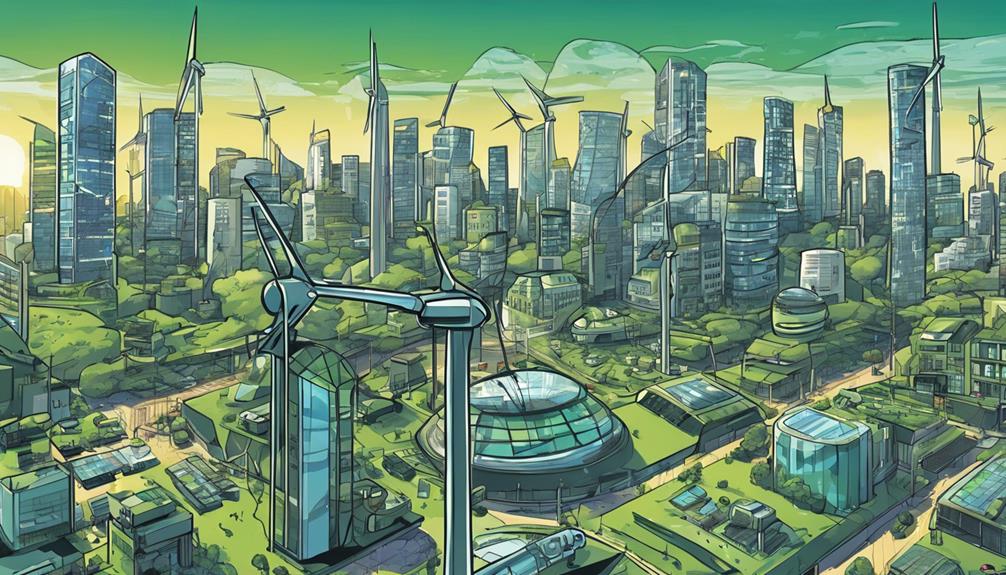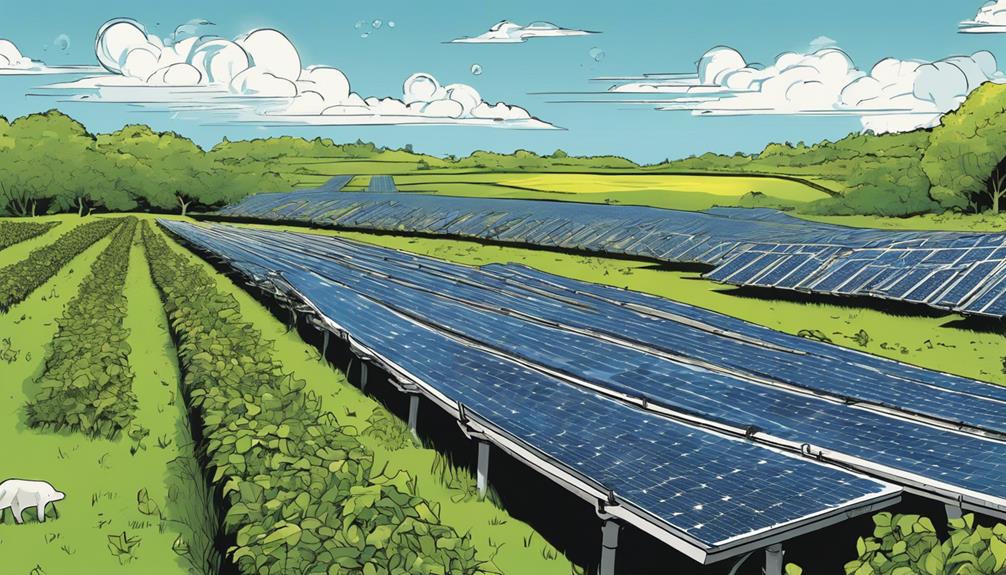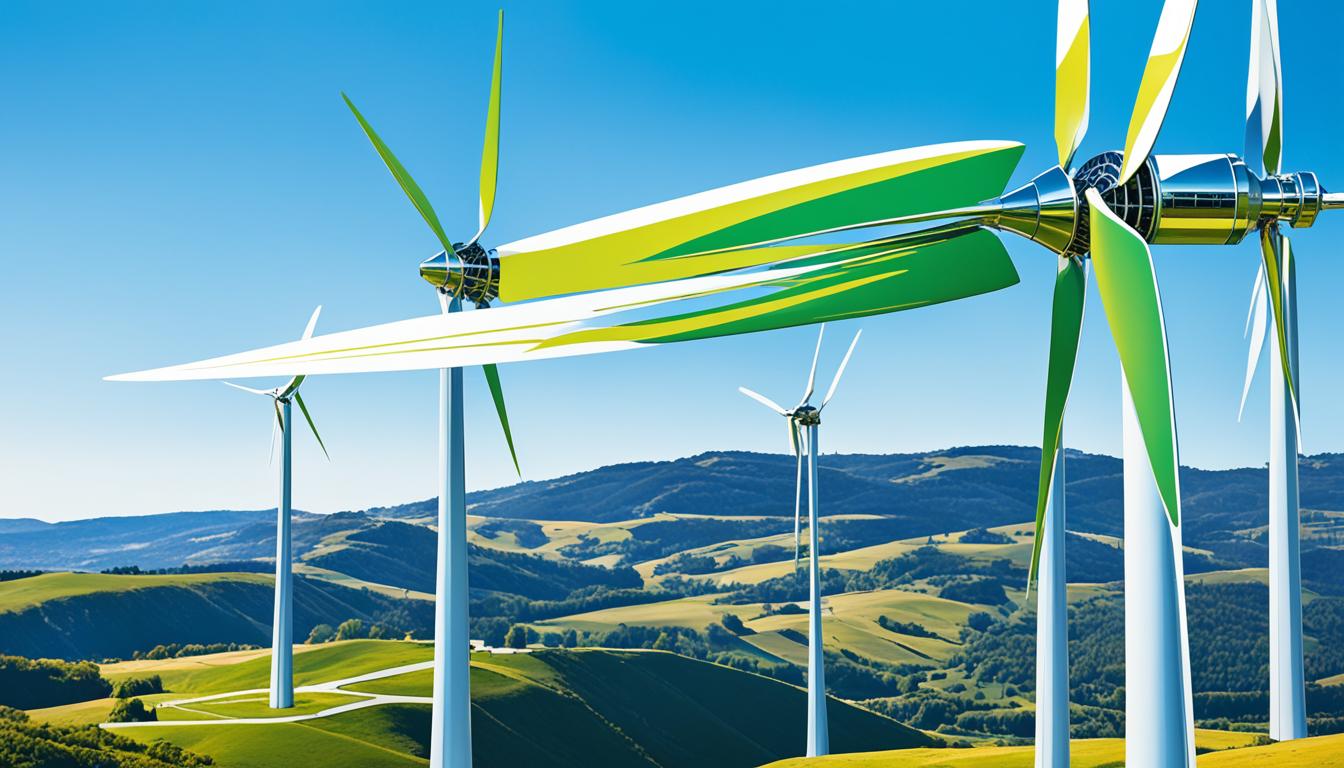Wind turbines can generate between 2 to 8.8 megawatts of electricity. The amount of power produced depends on factors like the size of the turbine and how fast the wind is blowing. Bigger turbines tend to make more megawatts. If you want to know more about how wind turbines work and their energy production, there are many interesting details to explore.
Key Takeaways
- Wind turbines can produce 2 to 8.8 megawatts of electricity.
- Larger turbines generate higher megawatts.
- Factors influencing output include turbine size, wind speed, and efficiency.
- Turbines start producing at 6-9 mph wind speeds.
- One megawatt can power about 300 homes annually.
Wind Turbine Power Output
Wind turbines can generate varying amounts of electricity, typically ranging from 2 to 8.8 megawatts. The power output of wind turbines is influenced by factors such as turbine size, wind speed, and efficiency.
Larger and more modern wind turbines have the capacity to produce higher megawatts of energy. Wind turbines start producing electricity at wind speeds of around 6-9 miles per hour. One megawatt of wind power can supply electricity to about 300 homes annually, showcasing the efficiency and potential impact of wind energy on residential areas.
As technology advances, wind turbines are becoming more efficient at converting wind energy into electricity, leading to an increase in their power output. This enhancement in capacity allows wind turbines to contribute significantly to the energy needs of homes and communities, making them a valuable source of renewable energy in the modern world.
Turbine Energy Production Capacity

What factors influence the energy production capacity of turbines?
The capacity of wind turbines is influenced by several key factors:
- Turbine Size: Larger turbines generally have a higher capacity to generate power.
- Wind Speed: The speed of the wind directly impacts the amount of electricity a turbine can produce.
- Onshore Installations: On average, onshore wind turbines have a high capacity of 2-3 megawatts and can generate over 6 million kilowatt-hours of electricity annually, enough to power around 1,500 households.
The energy production capacity of wind turbines is pivotal in determining their effectiveness in generating electricity for households and communities.
UK Wind Farm Capacity Analysis
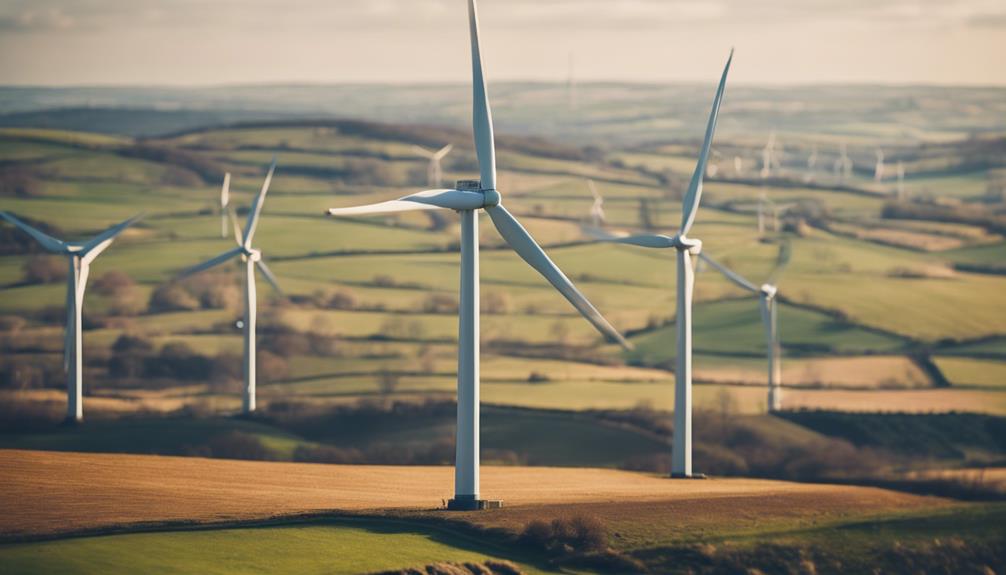
How does the capacity analysis of wind farms in the UK reflect the nation's commitment to renewable energy sources?
The UK's wind power capacity has increased significantly, with over 8,800 onshore and 2,300 offshore turbines playing a pivotal role in meeting around 26% of the country's electricity demand. This substantial contribution highlights the UK's dedication to sustainable energy production and reducing its reliance on fossil fuels.
The nation's favorable wind patterns and its strategic positioning have made it an ideal location for wind farms, ensuring reliable renewable energy generation. Additionally, the rapid growth of wind power capacity from 7% in 2013 to over 26% in recent years underscores the UK's progress towards a greener and more environmentally friendly energy sector.
Typical Wind Turbine Energy Generation
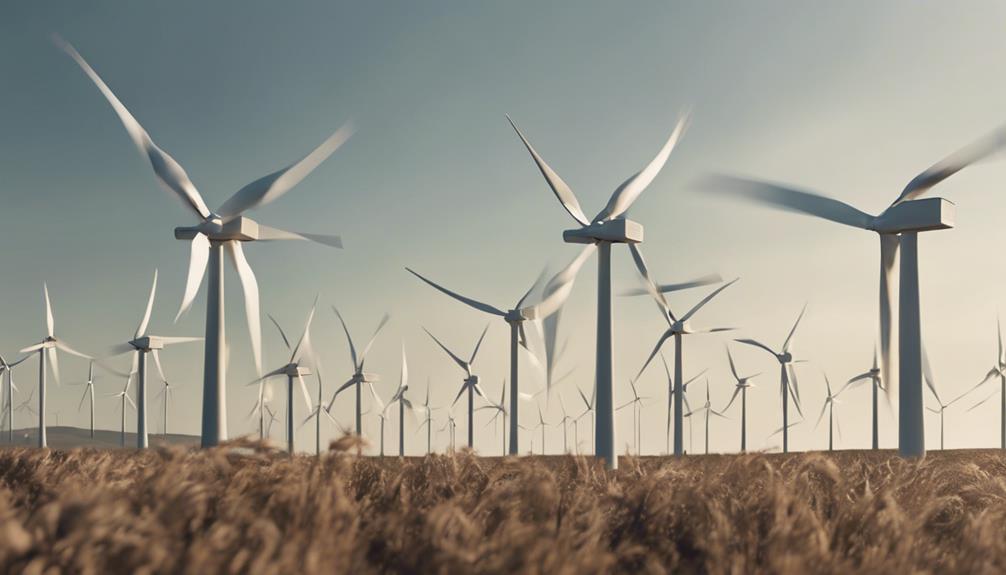
When it comes to typical wind turbine energy generation, it's important to take into account the energy production efficiency and turbine capacity factors.
Understanding how efficiently a wind turbine can convert wind power into electricity is key to maximizing its output.
Factors like wind speed, turbine size, and maintenance play a significant role in determining the overall energy generation potential.
Energy Production Efficiency
With the capability to produce up to 8.8 MW of electricity, the most efficient wind turbine design stands out for its remarkable energy generation.
When it comes to energy production efficiency, large, three-blade, horizontal-axis wind turbines excel in harnessing wind power. These turbines have the capacity to generate electricity for an average home with just one rotation of their colossal blades.
Additionally, wind turbines can operate effectively in a wide range of wind speeds, from 6 to 55 mph, making them versatile in different environments and locations.
- The most efficient wind turbine design can produce up to 8.8 MW of electricity.
- Large, three-blade, horizontal-axis wind turbines are known for their high energy generation.
- Wind turbines can generate electricity in wind speeds ranging from 6-55 mph.
Turbine Capacity Factors
Wind turbines' effectiveness in converting wind into electricity can be measured through their capacity factors, which typically range from 25% to 45%.
The capacity factor represents the ratio of the actual energy output of a wind turbine to its potential output if it were operating at full capacity all the time. For example, a 2 MW wind turbine with a 30% capacity factor would produce approximately 5.3 million kWh per year.
Turbines placed in areas with higher wind speeds tend to have higher capacity factors, exceeding 40%. Understanding and optimizing capacity factors are essential for maximizing electricity production.
Wind Turbine Electricity Production Factors
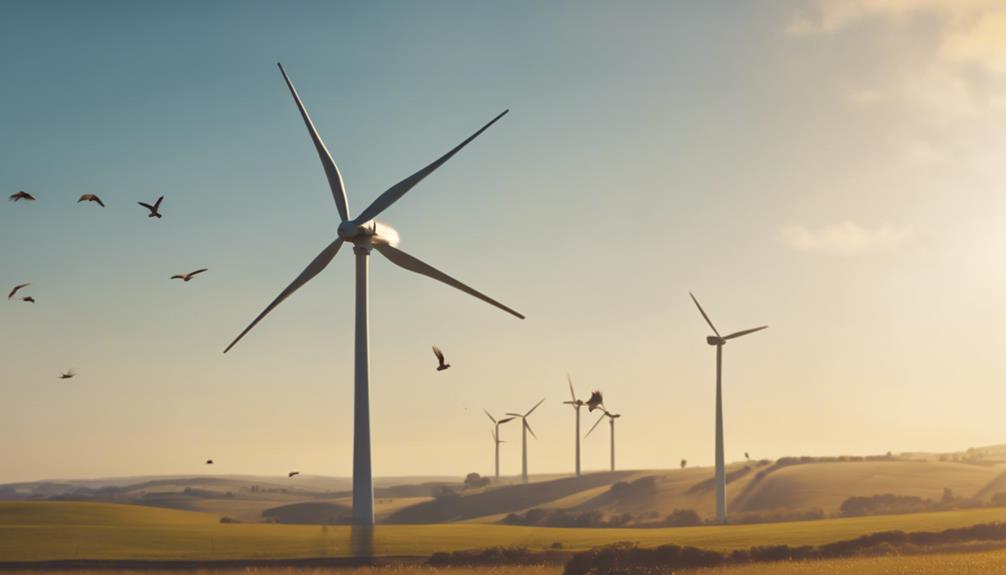
Factors influencing the production of electricity by wind turbines include turbine size, wind speed, and efficiency. These factors collectively determine the electricity output of a wind turbine:
- Turbine Size: Larger wind turbines generally have higher megawatt capacities for electricity production. The size of the turbine plays a pivotal role in determining how much electricity it can generate.
- Wind Speed: Wind speed is a key factor in the amount of electricity a wind turbine can produce. Higher wind speeds result in increased electricity generation.
- Location: The placement of wind turbines, whether onshore or offshore, also affects their electricity production capabilities. Offshore wind turbines tend to experience stronger and more consistent wind speeds, leading to higher electricity production compared to onshore turbines.
Wind Turbine Efficiency and Capacity

Efficiency and capacity are key considerations in maximizing the electricity output of wind turbines. Wind turbines harness the kinetic energy of the wind to generate electricity, making them a vital renewable energy source for a sustainable future.
The most efficient design for power generation is the large, three-blade, horizontal-axis type, capable of producing up to 8.8 MW of electricity. This showcases the significant contribution of wind energy to global power generation.
Worldwide wind power capacity has been steadily increasing, reaching nearly 600 GW by the end of 2018. A single rotation of the colossal turbine blades can power an average UK home for a day, highlighting the remarkable efficiency of wind turbines.
As countries like the US continue to invest in wind power, they play a crucial role in the shift towards a cleaner and more sustainable energy future. Wind turbine efficiency and capacity are essential in maximizing the benefits of this renewable energy source.
Future of Wind Turbine Technology
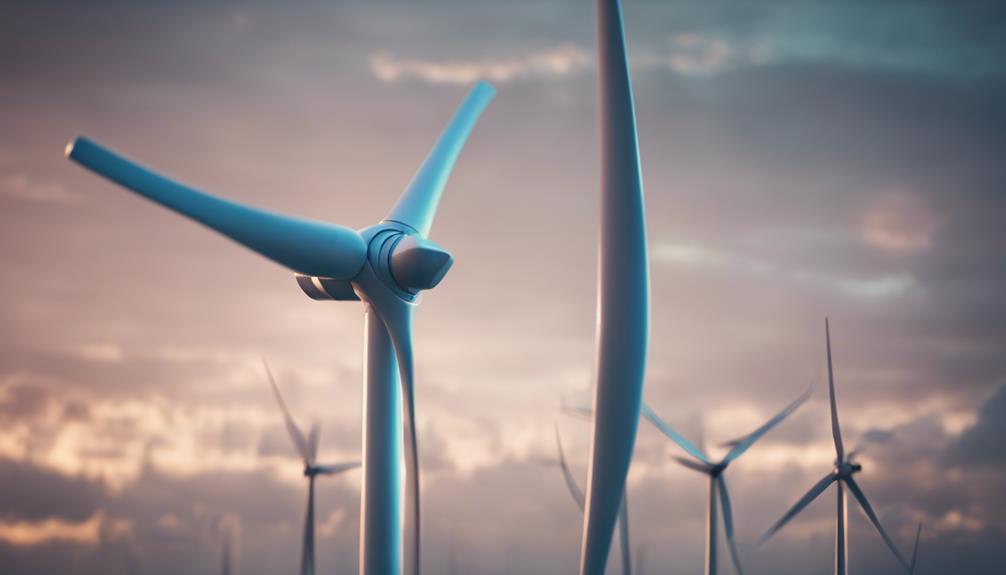
Advancements in wind turbine technology are shaping the future of renewable energy production through increased efficiency and energy output. The wind energy industry is evolving rapidly, driven by technological innovations and a growing emphasis on sustainable energy production.
Here are some key aspects influencing the future of wind turbine technology:
- Offshore Wind Farms: Offshore wind projects are expanding to capitalize on stronger and more consistent wind resources, enabling higher power generation capacity.
- Wind Energy Storage: Research efforts are focusing on developing effective wind energy storage solutions to overcome intermittency challenges and secure a reliable and consistent power supply.
- Government Incentives: Supportive policies and incentives from governments worldwide are fueling the growth of wind energy technology, propelling innovation and advancement in the field.
These developments signify a promising future for wind turbines in the renewable energy landscape, paving the way for a more sustainable and efficient energy industry.
Frequently Asked Questions
How Many Megawatts Does a Wind Turbine Produce per Day?
You wonder, "How many megawatts does a wind turbine produce per day?" Wind turbines, depending on size and wind speed, can generate an average of 6.6 megawatt-hours daily, with larger turbines producing even more.
How Many Homes Can a 1 MW Wind Turbine Power?
Imagine a 1 MW wind turbine as a beacon of power. It can energize around 300 homes annually, making it a crucial source for a small community. Each rotation fuels homes for a day, supporting sustainability.
How Long Does a 2 Megawatt Wind Turbine Last?
To answer 'how long does a 2 megawatt wind turbine last?' – a 2 MW wind turbine typically functions for 20-25 years. Regular maintenance and inspections can extend its lifespan. Components may require replacement for best performance.
How Much Energy Does a 1 MW Wind Turbine Produce?
Generating around 2.4 million kWh annually, a 1 MW wind turbine can power about 300 average U.S. homes for a year. Wind conditions affect output, with turbines typically operating at 25-45% capacity.
Can the Power Output of a Home Wind Turbine be Compared to a Commercial Wind Turbine?
When comparing home wind turbine power production to commercial wind turbines, there are several factors to consider. While home turbines can generate enough power for a single household, commercial turbines produce much more energy, often powering entire communities. The difference in scale and technology makes direct comparison challenging.
What is the Relationship Between the Cost of Building a Wind Turbine Power Plant and the Amount of Power It Produces?
The cost of building wind turbines has a direct impact on the amount of power they can produce. Higher upfront costs for construction and installation of a wind turbine power plant typically result in greater power output, making it a vital consideration for investors and developers in the renewable energy industry.
What is the Comparison between the Power Generation of Wind Turbines and Solar Panels?
When comparing the power generation of wind turbines to solar panels, it’s important to consider the unique advantages of each. While wind turbines are more efficient in areas with consistent wind, solar energy production on rooftops can be a space-saving and cost-effective option for residential and commercial applications.
Conclusion
So, how many megawatts does a wind turbine produce?
The answer may surprise you! With advancements in technology and increasing efficiency, wind turbines are able to generate more power than ever before.
As we look towards the future, the potential for even greater energy production from wind turbines is limitless.
So, are you ready to harness the power of the wind and join the renewable energy revolution?

